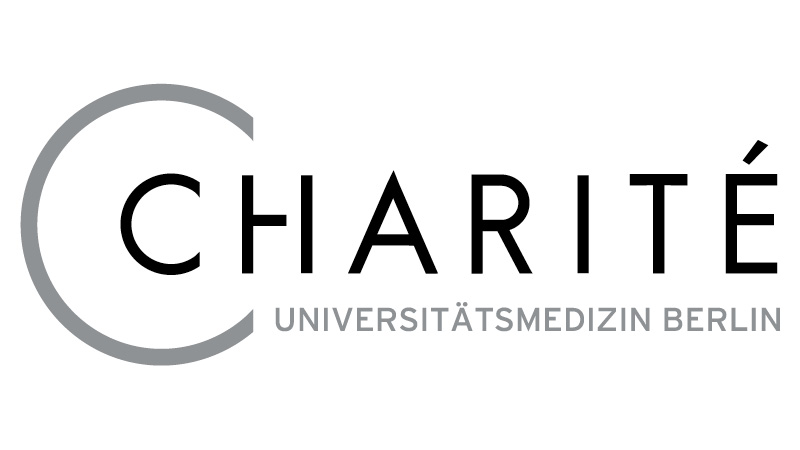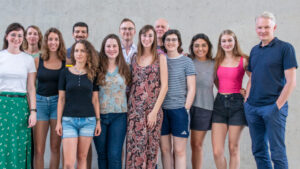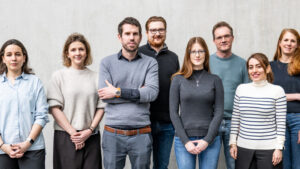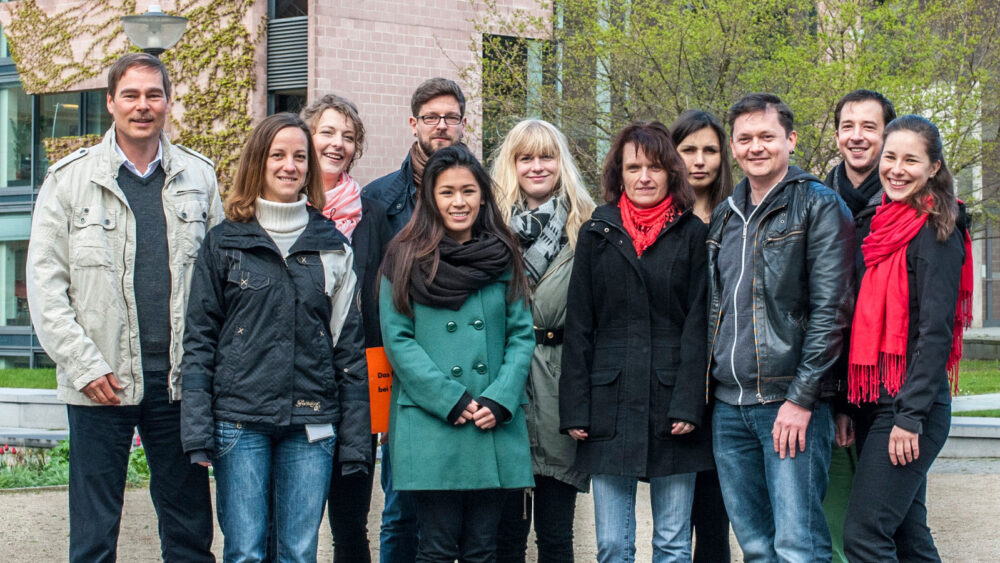

Buttgereit lab
How do immune cells adapt to oxygen and nutrient deficiencies in inflamed tissue?
Glucocorticoids and Bioenergetics
Acute and chronic inflammation can lead to a pronounced lack of oxygen and nutrients in the area of inflammation. How does the immune system manage to remain active despite this?
In acute inflammatory processes such as in the initial phase of bone healing -the fracture hematoma -, but also in chronic inflammation, such as rheumatoid arthritis, cells sometimes need more nutrients and oxygen than the body provides. This can lead to a pronounced lack of these vital substances at the site of inflammation.
In order to be able to continue to functioning, especially immune cells which accumulate in the area of inflammation or in a fracture hematoma have a number of adaptation mechanisms. In this way, they manage to compensate their bioenergetic balance, which is decisive for the survival, development and functional efficiency of all cellular systems.
Our research group is investigating such mechanisms, as they undoubtedly play a central role not only in acute and chronic inflammation, but also in tissue regeneration. Furthermore, these adaptation mechanisms also offer possible starting points for new therapeutic strategies, as well as explanatory approaches for the modes of action of already approved anti-inflammatory drugs such as glucocorticoids.
The adaptation mechanisms of immune cells to an altered microenvironment in inflammatory events differ from species to species. In particular, disease processes in inflammatory joint diseases in humans and regeneration processes in bone healing cannot yet be adequately modelled in animals, making it difficult to transfer the results of these experiments to humans.
Therefore, we are establishing in vitro models based on human cells in order to mimic acute and chronic inflammation such as found in the initial phase of fracture healing and in the inflamed joint. To this end, we are generating a variety of different in vitro 3D disease models that exclusively consist of the involved human cells in shape with a 3D architecture under the influence of an inflammatory microenvironment.
Prospectively, the established models will offer an alternative to the animal models used in basic and applied biomedical research in order to i) study pathophysiological and regenerative processes of musculoskeletal diseases, ii) identify new potential target molecules and iii) test new therapeutic strategies and finally iv) reduce or even replace animal experiments.
Keywords
Autoimmune diseases
Immunometabolism
Glucocorticoids
Fracture healing
3 R research
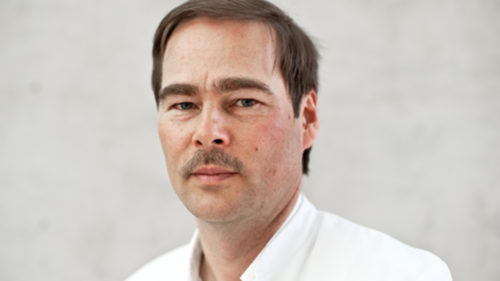
Groupleader:
Apl. Prof. Dr. rer. nat. Frank Buttgereit
Scientists:
Dr. Timo Gaber
Dr. Alexandra Damerau
Dr. Moritz Pfeiffenberger
PhD and MD students
Dana Alkhoury
Manuela Jakstadt
Min Liu
Gabriele May
Matilda Nieswandt
Johannes Plank
Jiayi Tian
- Pfeiffenberger M, Damerau A, Ponomarev I, Bucher CH, Chen Y, Barnewitz D, Thöne-Reineke C, Hoff P, Buttgereit F, Gaber T, Lang A. Functional Scaffold-Free Bone Equivalents Induce Osteogenic and Angiogenic Processes in a Human In Vitro Fracture Hematoma Model. J Bone Miner Res. 2021 Feb 3. doi: 10.1002/jbmr.4267. Epub ahead of print. PMID: 33534144.
- Buttgereit F, Gaber T. New insights into the fascinating world of glucocorticoids: the dexamethasone-miR-342-Rictor axis in regulatory T cells. Cell Mol Immunol. 2021 Mar;18(3):520-522. doi: 10.1038/s41423-020-00598-0. Epub 2021 Jan 6. PMID: 33408341.
- Damerau A, Gaber T, Ohrndorf S, Hoff P. JAK/STAT Activation: A General Mechanism for Bone Development, Homeostasis, and Regeneration. Int J Mol Sci. 2020 Nov 26;21(23):9004. doi: 10.3390/ijms21239004. PMID: 33256266; PMCID: PMC7729940.
- Dejaco C, Alunno A, Bijlsma JW, Boonen A, Combe B, Finckh A, Machado PM, Padjen I, Sivera F, Stamm TA, Buttgereit F. Influence of COVID-19 pandemic on decisions for the management of people with inflammatory rheumatic and musculoskeletal diseases: a survey among EULAR countries. Ann Rheum Dis. 2020 Nov 6:annrheumdis-2020-218697. doi: 10.1136/annrheumdis-2020-218697. Epub ahead of print. PMID: 33158877; PMCID: PMC7650208.
- Buttgereit F, Matteson EL, Dejaco C. Polymyalgia Rheumatica and Giant Cell Arteritis. JAMA. 2020 Sep 8;324(10):993-994. doi: 10.1001/jama.2020.10155. PMID: 32897333.
- Burmester GR, Buttgereit F, Bernasconi C, Álvaro-Gracia JM, Castro N, Dougados M, Gabay C, van Laar JM, Nebesky JM, Pethoe-Schramm A, Salvarani C, Donath MY, John MR; SEMIRA collaborators. Continuing versus tapering glucocorticoids after achievement of low disease activity or remission in rheumatoid arthritis (SEMIRA): a double-blind, multicentre, randomised controlled trial. Lancet. 2020 Jul 25;396(10246):267-276. doi: 10.1016/S0140-6736(20)30636-X. PMID: 32711802.
- Pfeiffenberger M, Hoff P, Thöne-Reineke C, Buttgereit F, Lang A, Gaber T. The in vitro human fracture hematoma model – a tool for preclinical drug testing. ALTEX. 2020;37(4):561-578. doi: 10.14573/altex.1910211. Epub 2020 Jun 9. PMID: 32521037.
- Buttgereit F. Views on glucocorticoid therapy in rheumatology: the age of convergence. Nat Rev Rheumatol. 2020 Apr;16(4):239-246. doi: 10.1038/s41584-020-0370-z. Epub 2020 Feb 19. PMID: 32076129.
- Damerau A, Pfeiffenberger M, Weber MC, Burmester GR, Buttgereit F, Gaber T, Lang A. A Human Osteochondral Tissue Model Mimicking Cytokine-Induced Key Features of Arthritis In Vitro. Int J Mol Sci. 2020 Dec 24;22(1):128. doi: 10.3390/ijms22010128. PMID: 33374446; PMCID: PMC7794893.
- Damerau A, Gaber T. Modeling Rheumatoid Arthritis In Vitro: From Experimental Feasibility to Physiological Proximity. Int J Mol Sci. 2020 Oct 25;21(21):7916. doi: 10.3390/ijms21217916. PMID: 33113770; PMCID: PMC7663779.
- Gaber T, Brinkman ACK, Pienczikowski J, Diesing K, Damerau A, Pfeiffenberger M, Lang A, Ohrndorf S, Burmester GR, Buttgereit F, Hoff P. Impact of Janus Kinase Inhibition with Tofacitinib on Fundamental Processes of Bone Healing. Int J Mol Sci. 2020 Jan 29;21(3). pii: E865. doi: 10.3390/ijms21030865. PubMed PMID: 32013232.
- Strehl C, Ehlers L, Gaber T, Buttgereit F. Glucocorticoids-All-Rounders Tackling the Versatile Players of the Immune System. Front Immunol. 2019 Jul 24;10:1744. doi: 10.3389/fimmu.2019.01744. eCollection 2019. Review. PubMed PMID: 31396235; PubMed Central PMCID: PMC6667663
- Stefanowski J, Lang A, Rauch A, Aulich L, Köhler M, Fiedler AF, Buttgereit F, Schmidt-Bleek K, Duda GN, Gaber T, Niesner RA, Hauser AE. Spatial Distribution of Macrophages During Callus Formation and Maturation Reveals Close Crosstalk Between Macrophages and Newly Forming Vessels. Front Immunol. 2019 Nov 26;10:2588. doi: 10.3389/fimmu.2019.02588. PMID: 31956322; PMCID: PMC6953593.
- Pfeiffenberger M, Bartsch J, Hoff P, Ponomarev I, Barnewitz D, Thöne-Reineke C, Buttgereit F, Gaber T, Lang A. Hypoxia and mesenchymal stromal cells as key drivers of initial fracture healing in an equine in vitro fracture hematoma model. PLoS One. 2019 Apr 4;14(4):e0214276. doi: 10.1371/journal.pone.0214276. eCollection 2019. PubMed PMID: 30947253; PubMed Central PMCID: PMC6449067.
- Gaber T, Chen Y, Krauß PL, Buttgereit F. Metabolism of T Lymphocytes in Health and Disease. Int Rev Cell Mol Biol. 2019;342:95-148. doi: 10.1016/bs.ircmb.2018.06.002. Epub 2018 Jul 18. Review. PubMed PMID: 30635095.
- Lang A, Kirchner M, Stefanowski J, Durst M, Weber MC, Pfeiffenberger M, Damerau A, Hauser AE, Hoff P, Duda GN, Buttgereit F, Schmidt-Bleek K, Gaber T. Collagen I-based scaffolds negatively impact fracture healing in a mouse-osteotomy-model although used routinely in research and clinical application. Acta Biomater. 2019 Mar 1;86:171-184. doi: 10.1016/j.actbio.2018.12.043. Epub 2019 Jan 5. PubMed PMID: 30616076.
- Gerd-Rüdiger Burmester, Sarah Ohrndorf, Paula Hoff, Charité – Universitätsmedizin Berlin, Department of Rheumatology and Clinical Immunology, Berlin, Germany
- Georg N. Duda, Katharina Schmidt-Bleek, Charité – Universitätsmedizin Berlin, Berlin Brandenburg Center for Regenerative Therapies/ Julius-Wolff Institut, Berlin, Germany
- Carsten Perka, Tobias Winkler, Sebastian Hardt, Yannick Palmowski, Tazio Maleitzke, Charité – Universitätsmedizin Berlin, Center for Musculoskeletal Surgery, Berlin, Germany
- Andreas Radbruch, Max Löhning, Anna Rapp, Nayar Duran, Caroline Helmstetter, Deutsches Rheuma-Forschungszentrum, Berlin, Germany
- Roland Lauster, TU-Berlin, Medical Biotechnology, Berlin, Germany
- Markus Seibel, Hong Zhou, University of Sydney, ANZAC Institute, Sydney, Australia
- Stefan Krauss, Beth Israel Deaconess Medical Center, Harvard Medical School, and Merck Research Laboratories, Boston, USA
- Jon Yewdell, National Institute of Allergy and Infectious Diseases, Cellular Biology Section, Bethesda, USA
- Douglas J. Veale, University College Dublin, The Conway Institute for Biomedical and Biomolecular Research, Dublin, Ireland
- Susanna Röblitz und Dr. Rainald Ehrig, Konrad-Zuse-Zentrum Berlin
- Dirk Barnwitz und Dr. Igor Ponomarev, fzmb GmbH Bad Langensalza
- Paulin Jirkof, Institut für Experimentelle Chirurgie, UniversitätsSpital Zürich, Universität Zürich
- Marieluise Kirchner, Berlin Institute of Health at Charité – Universitätsmedizin Berlin, Core Facility Proteomics, Berlin, Germany
- Christian Dejaco, Rheumatologie, Medizinische Universität Graz, Graz, Österreich

 Deutsch
Deutsch